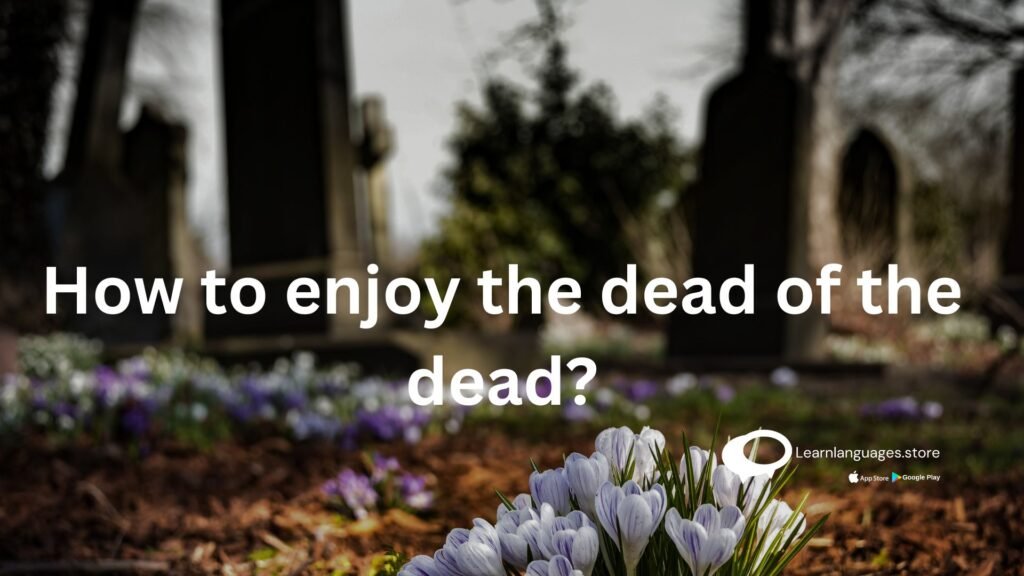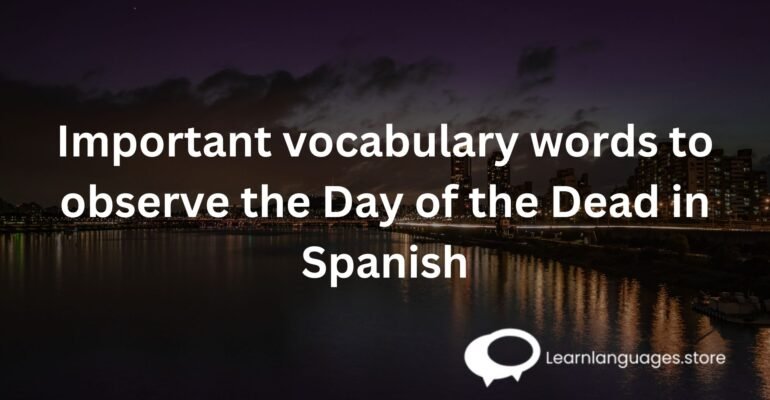Important vocabulary words to observe the Day of the Dead in Spanish
Important vocabulary words to observe the Day of the Dead in Spanish
We shall all pass away soon, but it definitely won’t be on Halloween. But it’s crucial that everyone understands what the Day of the Dead means in Spanish. What does it have to do with Halloween? Is trick-or-treating and donning spooky masks count? Or is it just a trip to some old cemeteries?
Estimated reading time: 5 minutes
The Day of the Dead celebration lasts from October 31 at Midnight to November 2 at Midnight. Although many people only connect this event with Mexico, it is also celebrated in Brazil, Bolivia, Ecuador, the Philippines, and Spain, as well as other nations in Latin America.
What is the Day of the Dead?
The Day of the Dead is a time to remember the dead while also celebrating life. People build altars and offer offerings to the dead, and they remember them by telling stories about them. They also clean their loved one’s graves and place flowers on them to attract the spirits.

While November 1 is traditionally reserved for remembering children and is known as the Da de los Angelitos (Day of the Little Angels), November 2 is dedicated to remembering adults who have died and is known as the Da de los Muertos or the Difuntos.
Some people believe that on this day (or days), the dead resurrect. Some even believe that if the dead do not see that they are remembered on this day, they will become enraged and may haunt the living.
This ceremony is thought to have originated in pre-Columbian cultures as a way for people to honor their ancestors. It was moved from August to October/November to coincide with the Christian festival of All Saint’s Eve or Halloween in the late autumn.
How to enjoy the dead of the dead?
The best way to enjoy the Day of the Dead is to stay away from the more morbid aspects of the day. There is a lot of creepy stuff going on. There’s some melancholy, heartbreak, and a yearning for loved ones to return.

Although this is a day to remember your loved ones, it is also a day to enjoy the festivities and rejoice in the fact that you are still alive. Don’t be too concerned about all the supposed spirits of the dead floating around. You are alive, you are breathing, you have a pulse, and you can party as only the living can.
If you have a loved one you want to remember and you like the idea of their spirit returning, the Day of the Dead is a good time to reflect on their lives and the good things they did, rather than being sad that they’re no longer with you.
Like all good holidays, there’s some good Day of the Dead food for those still alive, so make sure you try all the local delicacies. You should also try to participate in local customs as much as possible without being disrespectful, and take as many photographs as possible (but only where appropriate). The Day of the Dead is a vibrant celebration, particularly in Latin American countries.
Important Spanish vocabulary related to the Day of the Dead
The name of the day varies by country.Day of the Skulls in Bolivia and Finados in Brazil.
Day of All Saints, also known as Da de Todos los Santos, falls on November 1st, also known as La Noche de Duelo.
Other words related to death (la muerte) that you will need when discussing or preparing for the Day of the Dead include la tumba (the tomb) and el atad (the coffin).
Most families will create an altar for their deceased loved ones, which will include photos of the loved one as well as food and drink that they used to enjoy. There may be music, and family members may share stories and anecdotes about the deceased.

The altar could be in the cemetery or in the family home. Create an altar to experience the Day of the Dead spirit in non-observing countries.
El alfeique is a candy used in ofrendas, offering skulls, frutos, and other figurines on altars.
Deceased consume offerings, living allow eating and drinking. This appears to be working out well for everyone involved.
Pan de muerto, a special bread made on this day, is a popular dish, while mole, a thick sauce made from chocolate, fruits, and spices, and atole, a fruit-flavored drink, are also popular.
Dead enjoy pink sugared donuts, known as los golletes.
Cempasúchil, a marigold, symbolizes death in altars and graves. They make a cheerful symbol of death, so if death looks like a cempaschil, it can’t be all that bad. Another type of skeletal figure that represents death is the calacas.
Altar decoration consists of intricate papel picado, incense, las velas, and candelero, with skull themes and essential items like copal, candles, and juguetes.
You need to know how to speak Spanish if you want to attend the Day of the Dead ceremony.
Conclusion
We have examined every aspect of the Day of the Dead in Spanish in this article. To make this celebration even more intriguing, you can also study body parts in Spanish. You should be lustful for the desire to sound like a native Spanish speaker. Never pass up the chance to improve and learn.
Learn Languages Store
Vashi,
Email: services@learnlanguages.store










